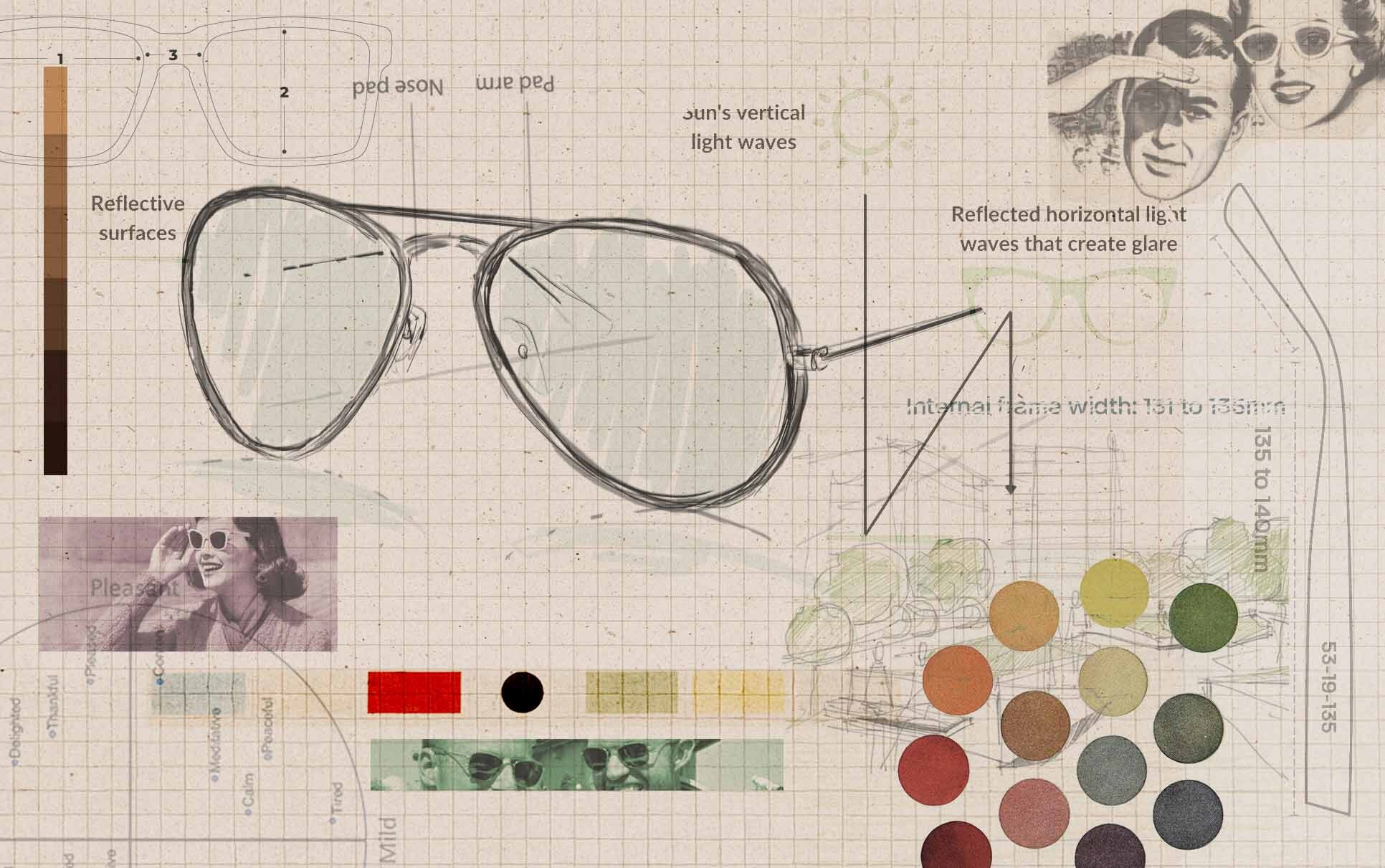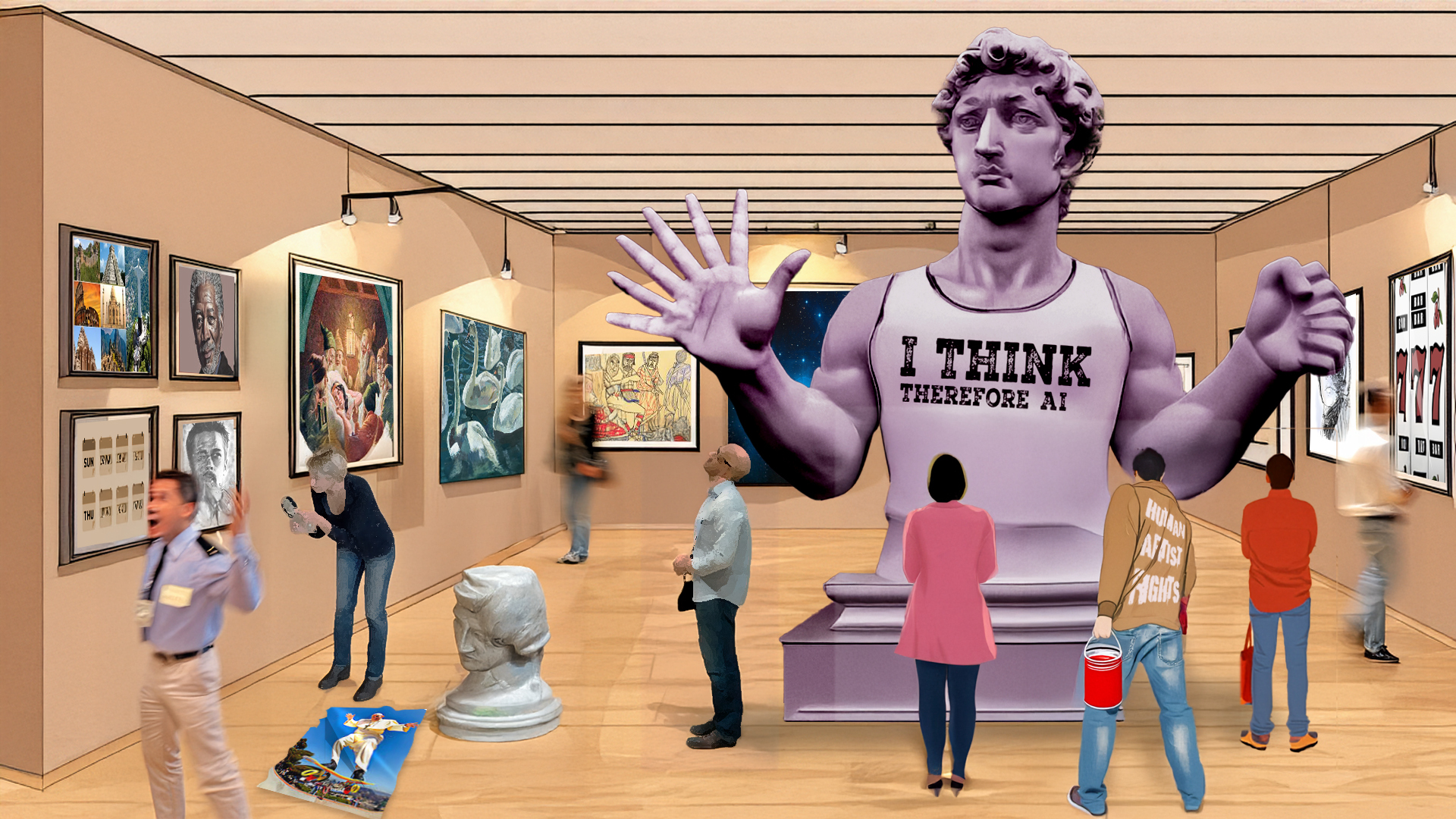Love them or loathe them, sunglasses are as much a part of our culture as ice cream and lazy Sundays. More than fashionable face furniture, it’s interesting to understand how sunglasses affect mood and perception. So, what colour are your thoughts?
From slits cut in ivory masks by ice-age hunters to full face visors on space suits, ‘sunnies’ have been protecting our vision for millennia. But that’s not even half the story. In 1936 Bausch and Lomb – the originators of RayBan – introduced their ‘Aviator’ to sharpen the vision of fighter pilots ( who presumably had at least 20:20 eyesight to start with ). But they also created a fashion phenomenon – and were not slow to cash in.
"Sunglasses don't merely protect your eyes from harmful glare. They shift your perception of the world, and the world’s perception of you."
The penny had dropped. Sunglasses didn’t merely protect your eyes from harmful glare. They shifted your perception of the world, and the world’s perspective on you. Sometimes in very subtle ways.
Tints
There are lots of lens tints out there: greys through brown, greens through blues, all the way through pinks to red. You might choose a colour to suit your look, but consciously or unconsciously you’re also choosing to see and experience the world in a new way, subtly different to the people around you.
Your sunglasses’ tint works by absorbing specific colours of light before they reach your eyes. The effect of suppressing some colours is to create a sharper perception of those that pass through your lenses unfiltered. Because each tint affects a different part of the colour spectrum, each has its unique influence on your perception of the scene before you.
Brown tints enhance the contrast and warmth in a scene. Grey lenses do the opposite, tending to reduce the vibrancy of all colours without distorting the hues. The world looks cooler, with less contrast between highlights and shadows. And rose tints probably don’t need much explanation.
Perception and mood are entangled
Did you know that sunglasses affect your mood? There’s a very real feedback loop between your perceptions and your emotions. Imagine putting a pair of brown tinted sunglasses on your nose as you walk through a park. The green of the grass will deepen. The sunlight will be golden. Harsh shadows will soften and take on texture. Everything is warmer, more vivid. Stay with that image for a few beats… and reflect on your mood now. Chances are, your awareness is heightened and your emotions are crackling. You’re breathing more deeply too. Your thinking slows, as you shift into ‘being’.
"There’s a very real feedback loop between your perceptions and your emotions."
Now swap for grey lenses. The scene ‘cools out’. Colours are true-to-life, and much less intense. The light feels evenly balanced and edges are softer. There’s clarity here – no one element steals the scene. How might you feel? No emotional highs or lows. A little more equanimous. There’s room to think, over the top of what you see.
But you might also feel a little too distant, disconnected. If that’s you, then change to a green tint. It’s a perfect half way house between brown and grey. It’s also the colour of the original Aviator – G-15: green, with 15% light transmittance.
Colours on the inside
As a writer, I know that I have similar tints behind my eyes: Internal perception filters that are sometimes incredibly helpful, and often fiendishly hazardous. I mostly hold a rose tinted view of science and technology which I like to think is based on thoughtfulness and experience. But I’m very aware that many people have fears about where some technologies will take us. Often my role is to present an evidenced, balanced view in approachable language. I want to engage curiosity, tell an informed, nuanced story, then stand back. For that, I need to switch to my neutral, grey-tinted filter.
Shifting to a different wavelength. There are definitely occasions when that warm brown lens comes in handy. In practice, it’s pretty hard to differentiate a market proposition just on features and benefits. Buyers at some point want to get to know the business and people behind the product. Its mission, their values, the experience of working with that business daily (especially true for managed services). In the annual Dentsu ‘Superpowers Index’ for B2B selling, buyers’ personal careabouts and values count as highly as professional considerations in their buying choices. It’s so important to engage hearts, as well as minds.
So what we have here – apart from a hopefully interesting ‘did you know?’ on the science of sunglasses – is a practical little metaphor for helping see into your own and others’ blind spots. And that’s as far as I dare stretch it!
Mirrored and more
One last thing. What do you make of mirrored sunglasses? I dislike them. I can understand there are practical applications – say in professional sports where you don’t want to give away any clues to your true mental state to a competitor. Even then, I don’t like them. Back in everyday life, the wearer is enforcing – and often reinforcing – an asymmetry of power. I can see into you, but you’re not going to get so much as a glimpse into me. It’s uncomfortable, that idea of being watched, evaluated, and not being able to see back.
"It’s uncomfortable, that idea of being watched, evaluated, and not being able to see back. "
But maybe there’s worse on its way – Smart Sunglasses, as currently modelled by the ever trustworthy and transparent Mark Zuckerberg. Now, you can film the person in front of you, and they won’t even know! Of course, Meta isn’t going to be the least bit interested where your eyes linger as you walk through a department store, say. And it wouldn’t have occurred that they could push real-time offers to that expensive digital advertising billboard that you’ve just helpfully balanced on the bridge of your nose.
Bugger. I think I just swapped those rose tinted lenses for red!





What do you think?